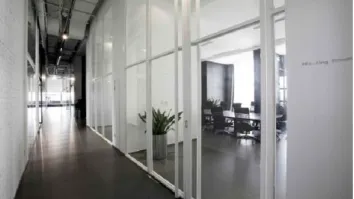
How investors can get their hands on Hong Kong’s cold storage assets
Sale-and-leaseback is amongst the fastest entry routes to invest in cold storage, says Colliers.
Colliers recently released a report that takes a deep dive into the cold storage asset class, and provides entry routes to this sub-sector for investors.
Historically, investors’ interests towards cold storage have been limited and buyers were hard to come by. However, cold storage has recently emerged as a fashionable asset class in Hong Kong. The market has seen a rise in cold storage demand which is fuelled by the robust growth of supermarket sales, growing popularity of online grocery orders, and the pressing need for vaccine and drug storage.
“The COVID-19 pandemic is driving a shift in consumer behaviour and creating rising demand in cold storage facilities. As people work remotely and stay at home for a longer period, it has stimulated the surge in online frozen food and grocery sales,” said Rosanna Tang, Head of Research for Hong Kong and Greater Bay Area.
“Hong Kong’s retained imported frozen food increased by 49% over the last three years, from 1.1 billion kilograms in 2018 to 1.6 billion kilograms in 2020, with growth accelerating over the last two years by 25% YOY in 2019 and 20% YOY in 2020. In addition, the gross merchandise value of groceries from HKTVmall reached HK$2.7 billion (US$0.4 billion) in 2020, up 154% YOY from HK$1.1 billion (US$0.1 billion) in 2019,” added Tang.
Cold storage remains a promising asset type
Demand for cold storage is likely to remain strong with a shift in consumer behaviour to online shopping, and the extended period of vaccines and drug usage. Since 2019, many cold storage operators and end-users have started to expand their cold storage facilities, including Dairy Farm, Fresh Del Monte and Meisei Hong Kong.
“The rising demand versus very limited supply of cold storage facilities in the market has created a fierce competition among end-users. The supply and demand imbalance compounds the fact that this asset type is very niche, which should further pique interests from both local and institutional investors, who are eyeing the higher rental premium of cold storage over conventional warehouse. This premium of cold storage is about 20-25% higher than that of conventional warehouse,” said John Davies, Executive Director of Office Services & Industrial Services.
“The scarcity of cold storage facilities coupled with the investment of capex in equipment means tenants tend to take up longer leases. Conventional lease terms for a warehouse is usually three years, whereas for cold storage it can be up to 10 years. Therefore, investors can enjoy more stable rents over a relatively long term. Meanwhile, there is a strong exit strategy for investors before the end of the assets term to consider conversion to a data centre. This highlights there is a great opportunity for investors looking for a more short-term return, or as protection if the market turns,” added Davies.
Sale-and-leaseback and conversion as the fastest entry routes to invest in cold storage
The shortage in industrial land poses an obstacle for developing a new built-to-suit cold storage facility. A faster route to enter the cold storage market is to look for existing owner-occupied cold storage operators to propose a sale-and-leaseback option.
“The sale-and-leaseback arrangement pushes higher yields, as tenants would typically raise the rental level before the sale to attract buyers in the market. In 2020 and 2021, we have already seen two en-bloc sale-and-leaseback transactions of cold storage,” said Pureanae Jang, Associate Director of Valuation & Advisory Services.
“There is also an opportunity for occupiers to consider lease-back opportunities to free up capital explore expansion in Hong Kong and across the GBA – occupiers are targeting to become asset lite,” added Jang.
The sales-and-leaseback opportunities are usually constrained by limited supply. For investors, there is an opportunity to explore industrial assets with potential for conversion or refurbishment, especially for those assets in a good location and with building specifications suitable for cold storage operations.
“In order for industrial buildings to support cold storage facilities, including the chiller or refrigerator plants and equipment, there are minimum requirements in various building specifications such as ceiling height and floor loading. We suggest investors looking for industrial premises fulfilling the minimum required building specifications,” said Jang.
To find out more about the cold storage market, click here to download the full report.



















 Advertise
Advertise





